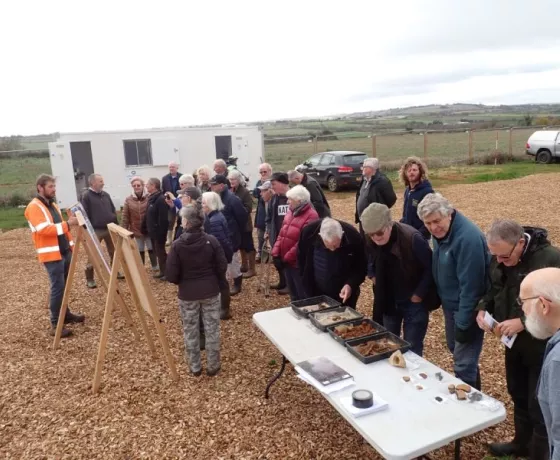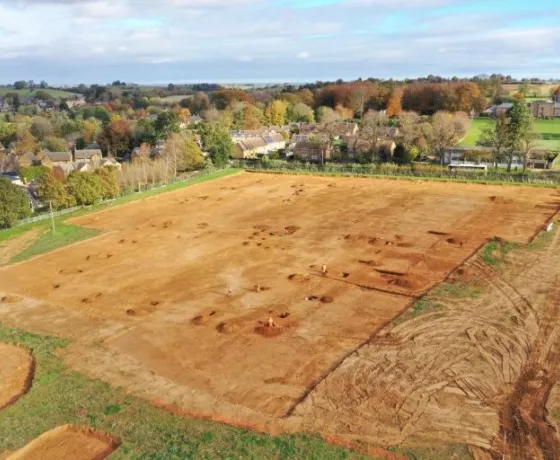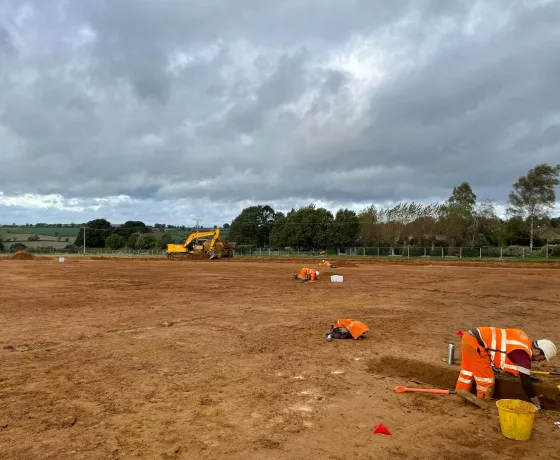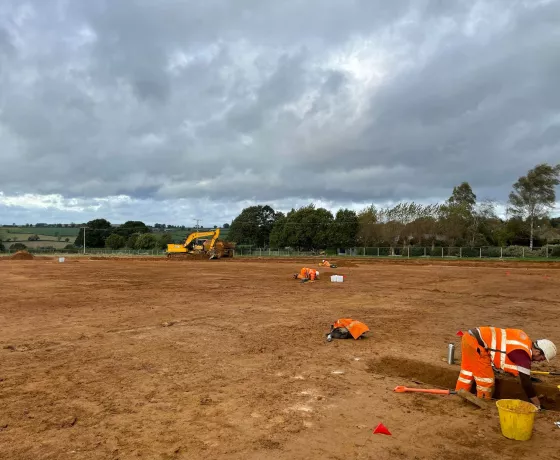With the excavation works now complete we have demobilised from site. In our final week we were fortunate enough to welcome members of local community to see the site and a selection of the artefacts recovered.
I would like to thank all those who attended and showed real interest in the archaeology and asked some excellent questions. I would also like to thank the team from OA who helped make the day, and the project as whole, so successful.
After our seven weeks on site we have an excellent understanding of the remains but there is still much to learn about the site and it’s inhabitants.

All the records produced on site, along the artefacts and ecofacts recovered are now being stored at our offices in Oxford where they will be fully analysed. This process, known as post-excavation, will enable to us refine the chronology of the settlement and gain further understanding of the inhabits and their daily lives. We have evidence that indicates our settlement originates in the early Iron Age (800-400BC) but we are not sure of the longevity of the site, something we hope to establish as part of the post-excavation work.

Unfortunately, this process does take some time and the final report is not likely to be available until late 2022/early 2023. The report will be made available via our website upon completion and all the artefacts and records produced on site will be deposited with the Oxfordshire Museum Services where they will be accessible to the public.
We will continue to update our blog with our findings as we progress through the post-excavation process.
Other posts in this collection
Read our latest posts about the archaeological investigations at Sibford Ferris.





